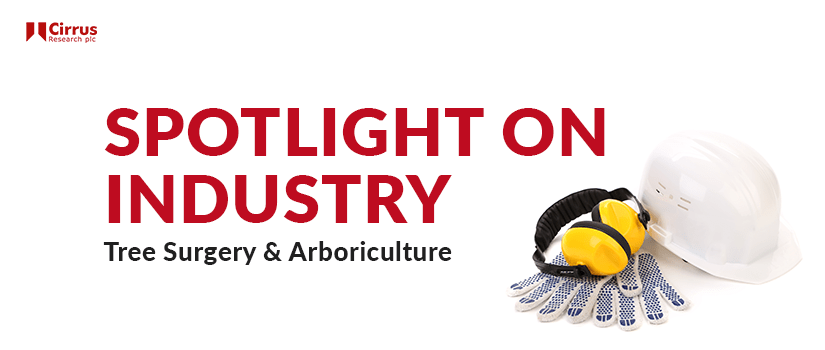Do you know what the noise and vibration regulations are? Every business in the UK is required by law, to keep their employees safe as they carry out their work. There are risks in every workplace regardless of the sector, whether it’s trip or fire hazards, and the measures to minimise and control these risks are relatively well-known. Unless you are a health and safety expert, the noise and vibration regulations can be a bit more obscure but are still as important to follow and enforceable as those that cover fire and trips. But what are the noise and vibration regulations? What do they require employers to do? And what happens if businesses fail to protect their employees from excessive noise and vibration levels?
The Noise and Vibration Regulations: what are they?
The Control of Noise at Work Regulations and the Control of Vibration at Work Regulations were both introduced to the UK in 2005 and set out employers’ legal responsibilities and the steps that need to be taken to keep employees safe from the risks of noise and vibration at work.
The Control of Noise at Work Regulations: in summary
The Control of Noise at Work Regulations require employers to:
- Assess the risks to employees from noise at work
- Take action to reduce the noise exposure that produces those risks
- Provide employees with hearing protection where noise levels cannot be reduced
- Make sure the legal limits on noise exposure are not exceeded
- Provide employees with information and training on how to mitigate and manage their own risk
- Carry out health surveillance where there is a risk to health
It’s important to note that the regulations do not apply to:
- members of the public exposed to noise from their non-work activities, or making an informed choice to go to noisy places;
- low-level noise that is a nuisance but causes no risk of hearing damage
At what point do employers need to take action to reduce noise at work?
The Control of Noise at Work Regulations require employers to take specific action when certain noise levels are reached values. These relate to:
- the level of exposure to noise of employees averaged over a working day or week; and
- the maximum noise (peak sound pressure) to which employees are exposed in a working day
The values are:
- lower exposure action values:
- daily LEP,d or weekly LEP,w exposure of 80 dB;
- peak sound pressure (LCPeak) of 135 dB;
- upper exposure action values:
- daily LEP,d or weekly LEP,w exposure of 85 dB;
- peak sound pressure (LCPeak) of 137 dB.
There are also levels of noise exposure which must not be exceeded. These are called exposure limit values. The exposure limit values are:
- daily LEP,d or weekly LEP,w exposure of 87 dB;
- peak sound pressure of (LCPeak) 140 dB.
Do the regulations outline what equipment needs to be used to measure noise at work?
In a previous article, we looked at the equipment that would be suitable for tree surgeons and arborists to use to measure and monitor the noise levels they’re exposed to when working. The Control of Noise at Work Regulations are specific about the instruments that should be used, including the standards they should be manufactured to and the data that they should provide.
When taking measurements to monitor the noise exposure of a person at work, the instrument used needs to measure the equivalent continuous A-weighted sound pressure level (LAeq). This represents the noise a person is exposed to during their working day. You also need the maximum C-weighted peak sound pressure level that the person is exposed to.
You can read more about what the different weightings mean in our blog.
The action levels highlighted in the Control of Noise at Work Regulations are given as daily (LEP,d) or weekly (LEP,w) exposure values along with peak sound pressure levels, all in decibels (dB). A sound level meter, or in the case of tree surgeons, a noise dosimeter, cannot measure LEP,d or LEP,w directly. These values are calculated from two other noise parameters, which are recorded during each measurement. These are:
- The equivalent continuous A-weighted sound pressure level in decibels that represents the sound the person is exposed to during the working day
- This is commonly known as the Leq and may be shown as LAeq or LAeq,t
- The duration over which the Leq is measured
With this information, you can calculate the LEP,d using the formula given in the Noise at Work Regulations (Schedule 1 Part 1 paragraph 1).
You should also measure the maximum C-weighted peak sound pressure level:
- This will usually be displayed on your sound level meter as Peak(C) dB or LCPeak
- In accordance with the regulations, this should always be measured with C-weighting
With these two measurements for each different activity to be assessed, you can calculate the LEP,d and where required, the LEP,w values.
To provide the most effective PPE or hearing protection, you may also need to record additional values such as the C-weighted Leq (LCeq) or the Leq of the noise in Octave Bands.
Our Advanced doseBadge5 and Optimus+ Industrial sound level meters can provide these functions, in addition to the LAeq and C-weighted peak values.
Any equipment you use to measure noise at work must meet the following requirements, as a minimum:
- For sound level meters:
- Class 2 of BS EN 61672-1:2013 (the current standard for sound level meters) or;
- Type 2 of BS EN 60804:2001 (the former standard)
- For noise dosimeters:
- BS EN 61252:1997+A2:2017 (noise dosimeters do not have a class or type number)
The regulations also state that you should be able to calibrate your equipment using an acoustic calibrator, which meets the requirements of at least Class 2 of BS EN 60942:2003.
To ensure that your equipment is calibrated correctly, you should not use a sound level meter and acoustic calibrator from different manufacturers unless you have very specific information and instructions as to how these two units will work together. It is possible to create large errors in the calibration level which should be avoided wherever possible.
What are the consequences of not following and/or adhering to the regulations?
The most obvious consequence of not following and sticking to the Control of Noise at Work Regulations is that someone could suffer from irreparable hearing damage, forever affecting their quality of life. It really is that simple. There is also the risk of reputational damage for a business that breaches the regulations and causes someone to suffer hearing damage, and the real possibility of litigation, followed by substantial fines by the Health & Safety Executive.
In 2015, it was reported that a UK manufacturer was fined £16,000 and ordered to pay £11,000 in legal costs, as they had been found to be in breach of the regulations. For lots of organisations, such a substantial fine could put their business in jeopardy.
The Control of Vibration at Work Regulations: a summary
Similarly to the regulations that govern occupational noise, the Control of Vibration at Work Regulations require employers to:
- Assess the risks to employees from vibration at work
- Take action to reduce the vibration exposure that produces those risks
- Make sure the legal limits on vibration exposure are not exceeded
- Provide employees with information and training on how to mitigate and manage their own risk
- Carry out health surveillance where there is a risk to health
The regulations cover both hand-arm and whole-body vibration, but for tree surgeons and those working in related fields, hand-arm vibration poses the biggest risk.
At what point do employers need to take action to reduce vibration at work?
Just as with noise, the Control of Vibration at Work Regulations introduce action and limit values for hand-arm vibration:
- The exposure action value of 2.5 m/s2 A(8) at which level employers should introduce technical and organisational measures to reduce exposure;
- The exposure limit value of 5.0 m/s2 A(8) which should not be exceeded
What are the consequences of not following and/or adhering to the regulations?
Again, the first and most important consequence to consider is the impact it could have on someone’s health, well-being, and quality of life. As with all breaches of health and safety law in the UK, there also follows the threat to a business’ reputation and significant fines. Some of the most recent fines due to breachers of the vibration at work regulations are as follows:
- In 2019, a local authority were fined £100,000 and forced to pay £28,673 in legal fees after seven grounds maintenance members suffered from excessive vibration levels
- Again in 2019, a housing association were fined £600,000 and forced to pay £13,995 in legal fees after five of their employees developed vibration white finger from using power tools to carry out maintenance tasks
- In 2020, an engineering firm were fined £300,000 and forced to pay £7,832 in legal fees after one employee made a complaint for a general lack of vibration awareness and control
- Again in 2020, another housing association was fined £80,000 and forced to pay £5,300 in legal fees for exposing four employees to dangerous levels of vibration
Measuring and monitoring noise and vibration in the workplace may seem daunting, but with the right help, guidance and equipment, it doesn’t have to be difficult. Cirrus Research is able to offer everything you need to easily and effectively measure and monitor noise and vibration at work. Simply get in touch with a member of our team with your query, and we’ll take you through the rest.



